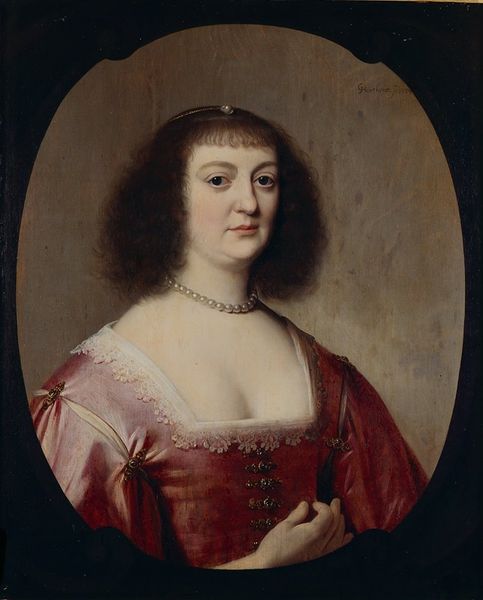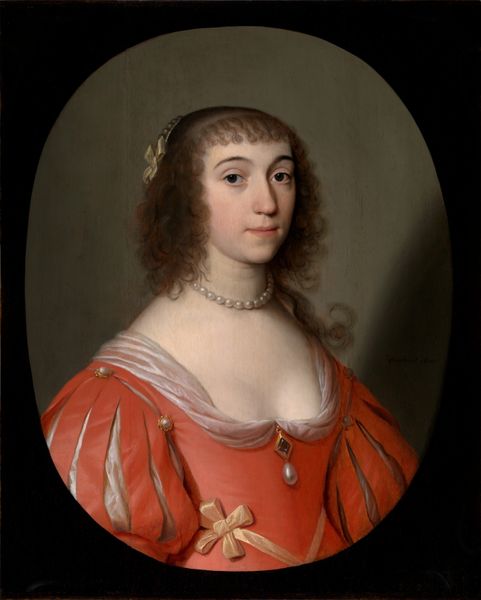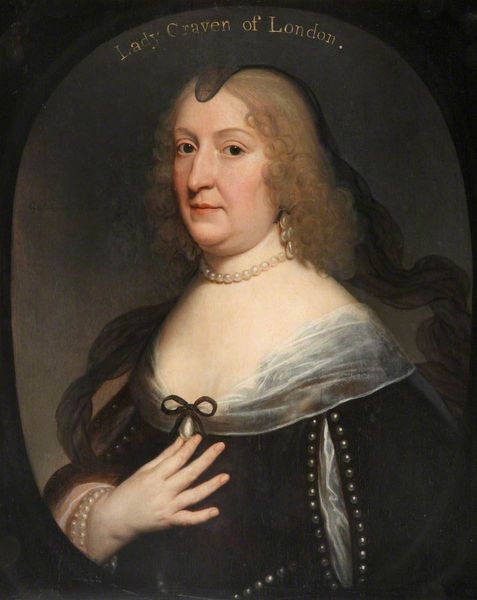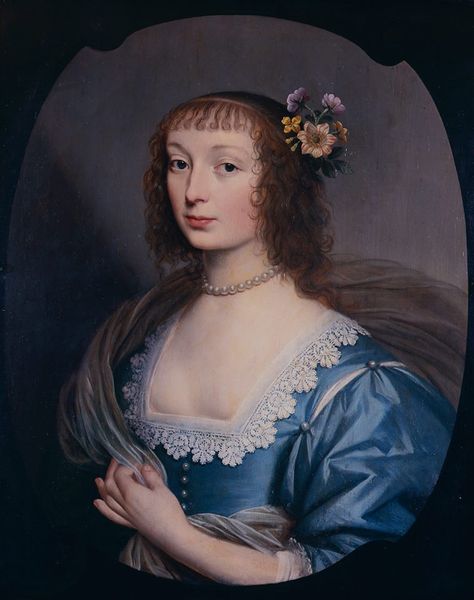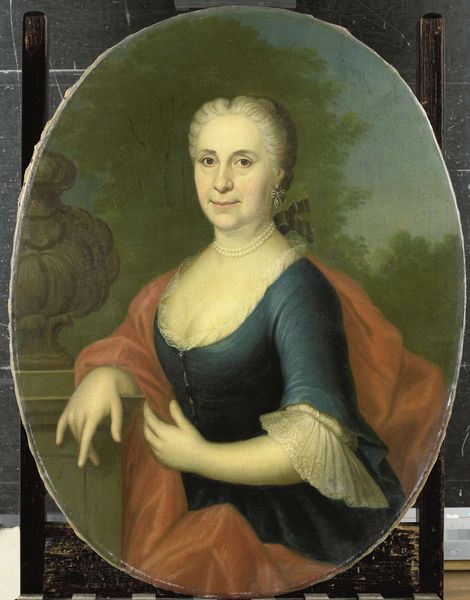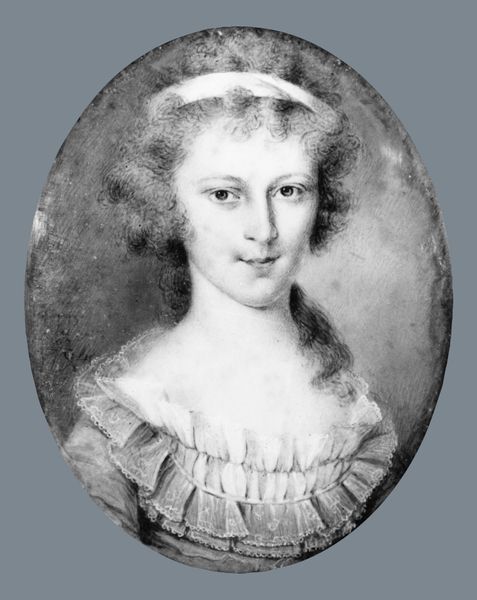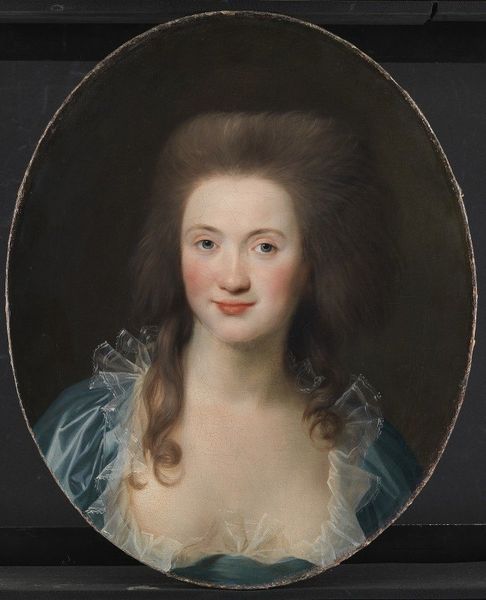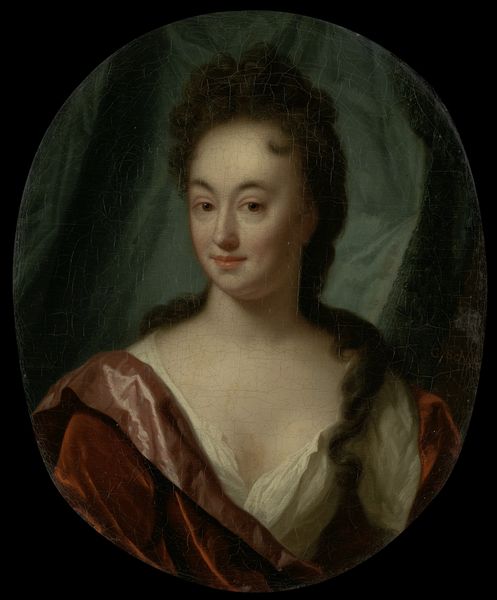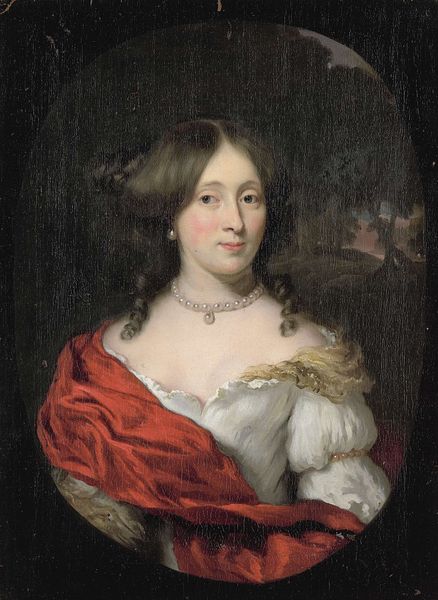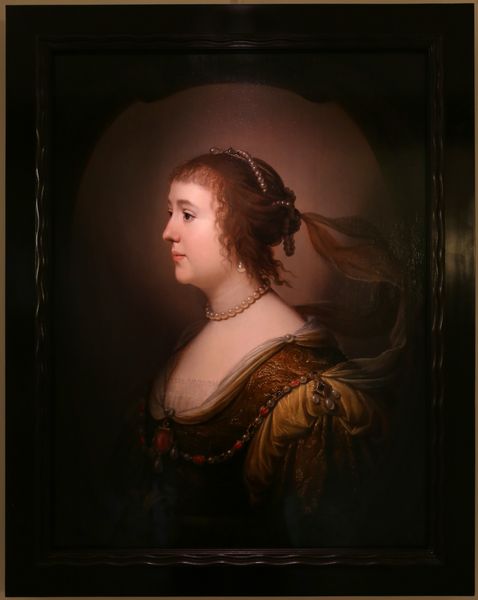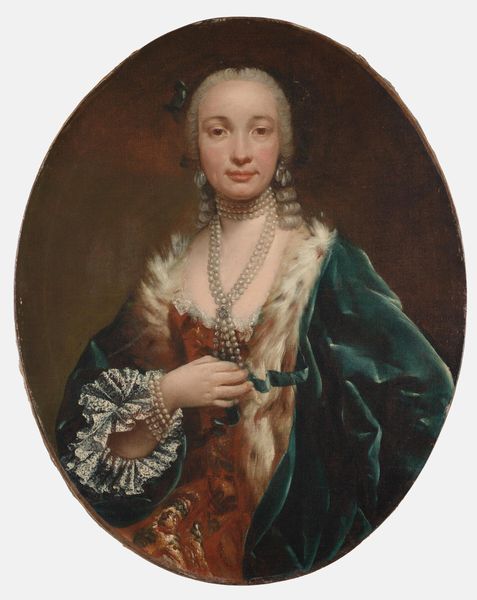
painting, oil-paint
#
portrait
#
baroque
#
painting
#
oil-paint
#
figuration
Copyright: Public domain
Editor: Here we have Gerard van Honthorst's portrait of "Eleonora Mauritia, prinses van Portugal," painted in 1636 using oil. The oval composition feels quite intimate, almost like a miniature. What strikes you most when you look at this image? Curator: The pearls! Notice the pearl necklace, the pearl earrings, and especially the large pearl suspended at the sitter’s breast. Pearls, in the language of symbols, carry layers of meaning, from purity and virginity to tears and sorrow. Editor: Sorrow? I hadn't considered that. Curator: Yes, pearls have long been associated with both joy and grief. Considering Eleonora Mauritia’s life – she never married, devoted herself to charitable works, and ultimately became a Catholic abbess – those glistening gems perhaps hint at a renunciation of worldly pleasures and embracing a more spiritual path. Editor: So, even something as seemingly straightforward as jewelry can be packed with significance. Curator: Absolutely! Look closer, and you'll also see other elements. The restrained color palette and relatively somber expression suggests something deeper. How does this compare to other Baroque portraits you’ve seen? Does this reading change how you perceive other works from that era? Editor: It definitely makes me think more critically about what symbols might be hidden within these portraits, the stories behind the figures, and the ways artists like Honthorst can layer those messages for the viewer. Curator: Indeed. Now, I wonder, what further explorations might unveil? It makes me consider symbols from varied contexts - cultural, political, psychological - can alter one's view, encouraging dialogue across time periods. Editor: That’s fascinating, it is something that will enrich my approach to interpreting art in the future. Thanks!
Comments
No comments
Be the first to comment and join the conversation on the ultimate creative platform.
